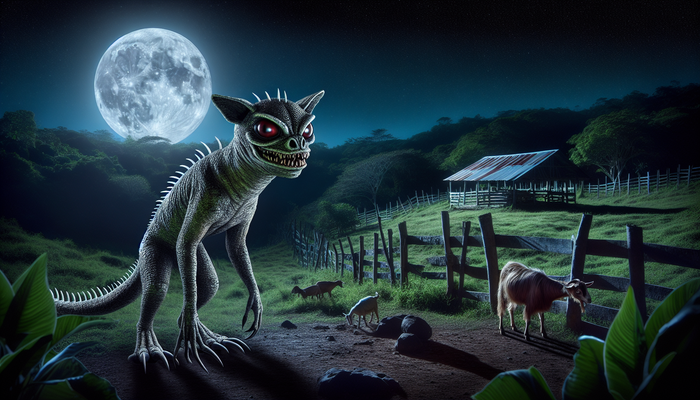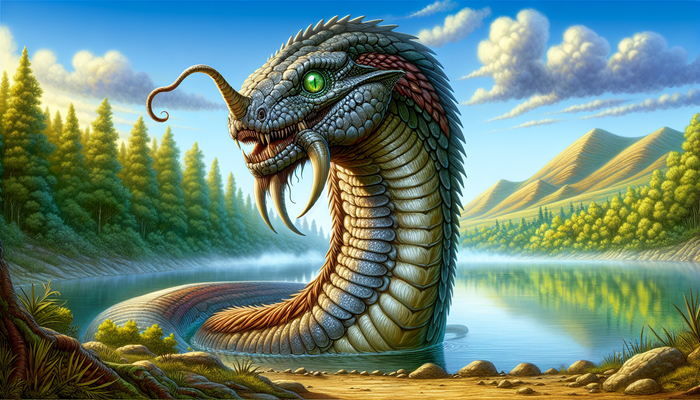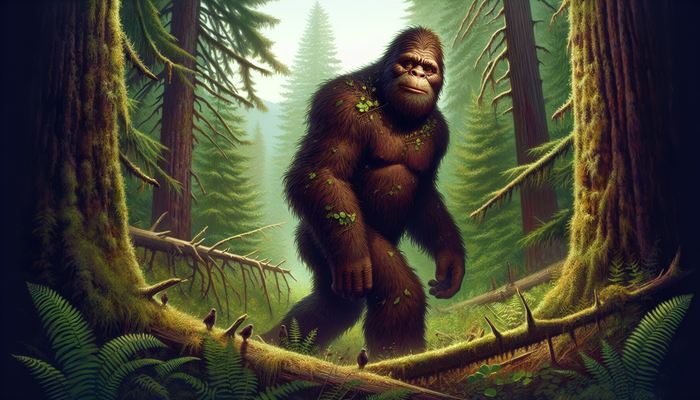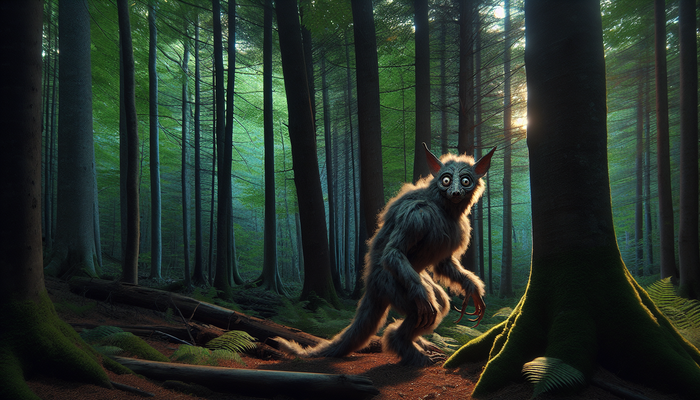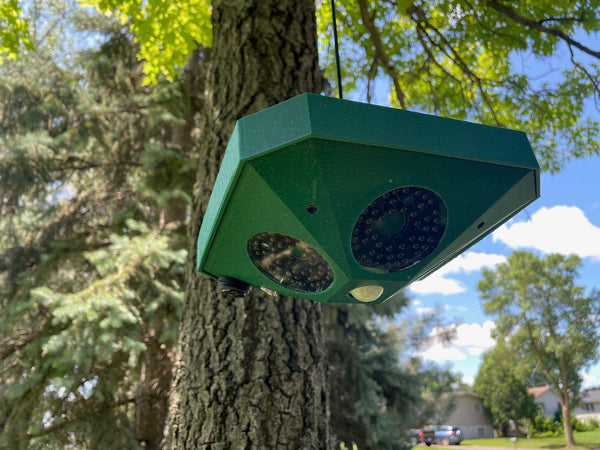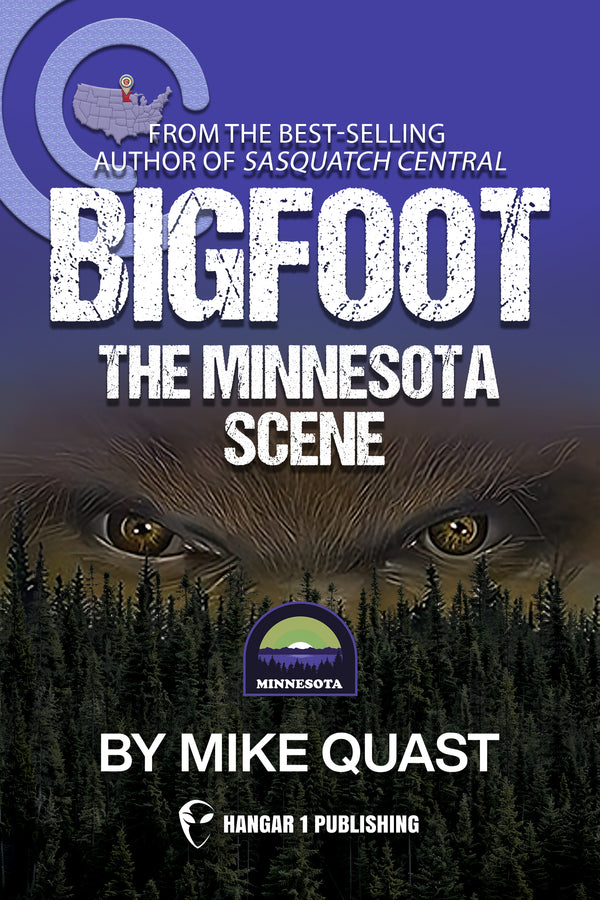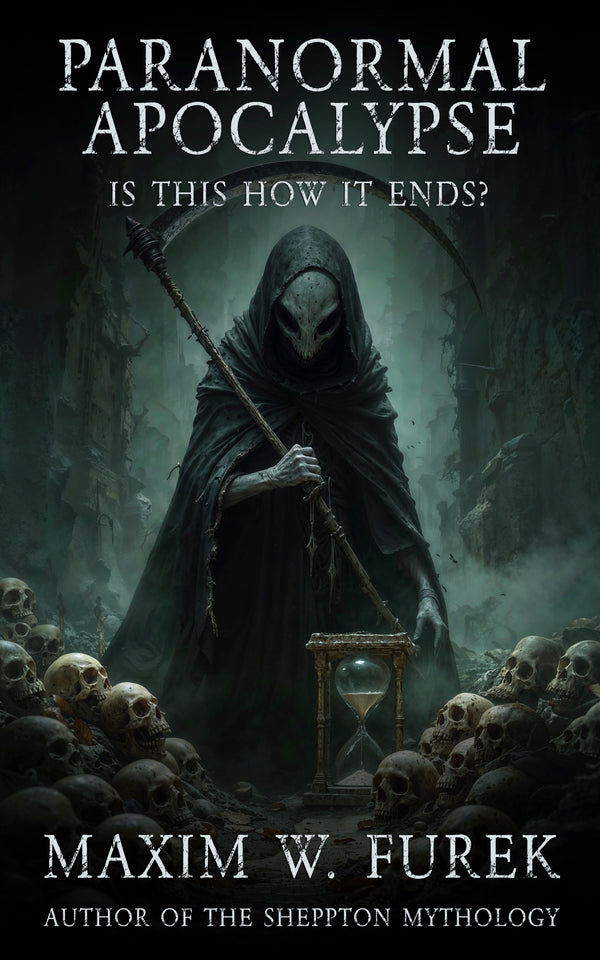Roars in the Mist: The Cherokee Death Cat
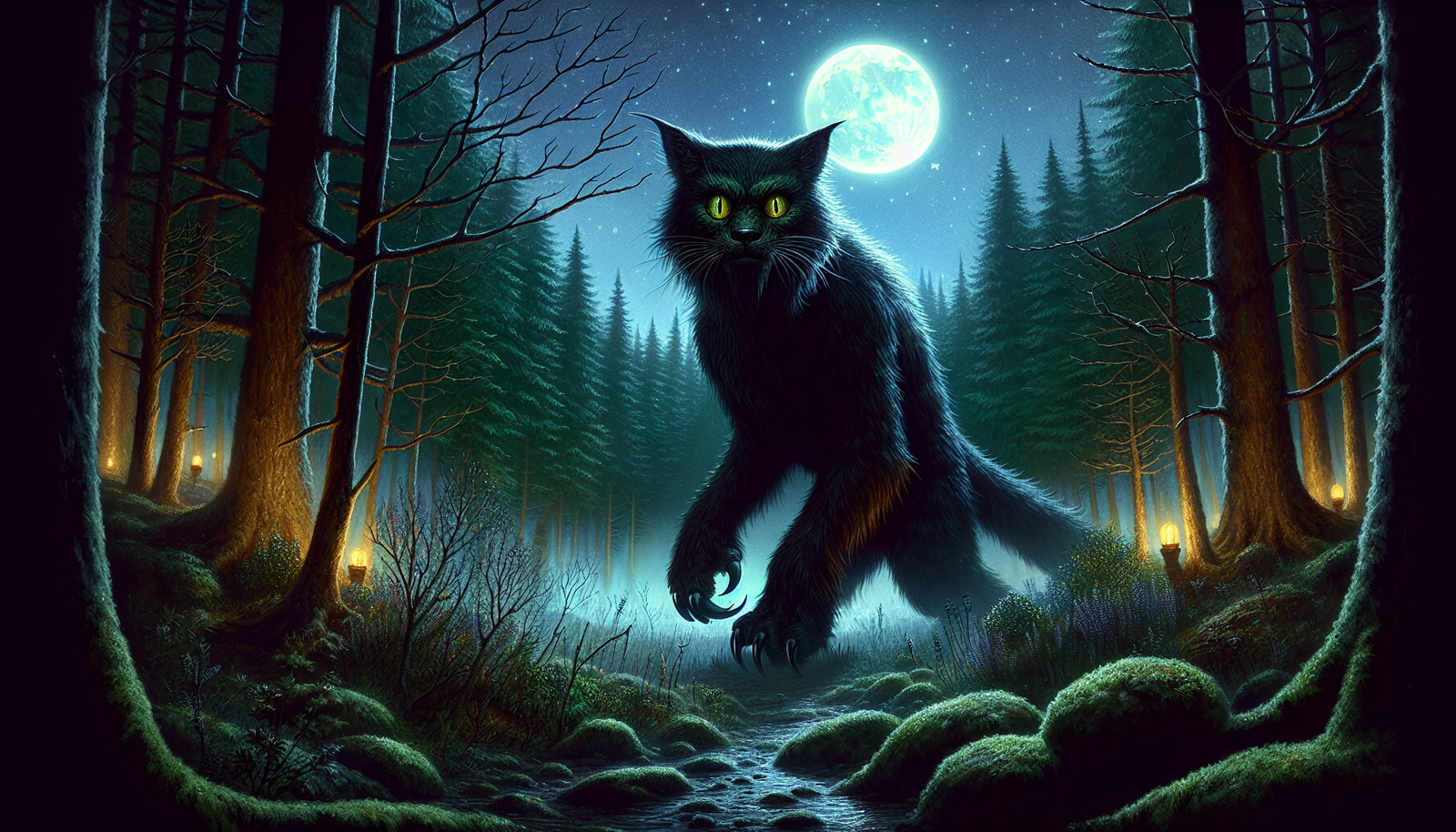
Lucas Jennings, Cryptozoologist and Adventurous Naturalist
Introduction
Imagine a creature that embodies both the beauty and terror of Appalachian wilderness, a being that roams the misty forests with eyes that glow in the dark. I’m describing the Cherokee Death Cat, a cryptid deeply woven into the fabric of Appalachian and Cherokee folklore. Known for its bone-chilling roars that pierce the mountain mists, this enigmatic creature has captured the imaginations of generations. In this article, I will explore the origins, sightings, and cultural significance of the Cherokee Death Cat, delving into the blurred lines between myth and potential reality. As an adventurous naturalist driven by curiosity, my aim is to unveil the mysteries surrounding this legendary creature. So come with me as we venture into the heart of Appalachia and uncover the secrets of the Cherokee Death Cat. The journey promises to be thrilling, thought-provoking, and just maybe, paradigm-shifting.
Origins in Cherokee Mythology
Like many legendary creatures, the Cherokee Death Cat’s origins are rooted in Native American mythology. Various Cherokee tales offer glimpses into how this cryptid came to be, often carrying symbolic meanings related to themes of transformation, spiritual powers, and vengeance. These stories have been passed down through generations, granting the Cherokee Death Cat an air of reverence and caution. Unpacking the mythological origins provides insight into how the creature became embedded in the culture and psyche of the Appalachian region.
Tale of Transformation
One of the most well-known tales describes the Cherokee Death Cat as a woman who was transformed into a half-feline creature as punishment for spying on a sacred ritual. In the story, the woman’s intense curiosity drove her to disguise herself in a cougar skin and secretly observe a ceremony forbidden for women to witness. But she was spotted by the village shaman, who then cursed her - fusing her body with that of the cougar and banishing her to forever roam the forests as the half-woman, half-cat known as the Cherokee Death Cat.
This tale of transformation carries symbolic warnings about respecting tribal rituals and gender norms. The woman’s curiosity is portrayed as dangerous, leading to her cursed fate. For generations, this story was likely told to Cherokee youths to teach them the consequences of straying outside their prescribed roles. It also shows how the Cherokee Death Cat was seen as both human and beast, straddling two worlds. The duality of its nature made it especially fearsome.
Tale of Protection
Another prominent Cherokee legend depicts the Cherokee Death Cat as a protective spirit that defended villages from evil forces. In this tale, a demon called Ew’ah terrorized Cherokee settlements, possessing powers to drive humans insane with just a glance. After the village’s strongest warrior returns from battling Ew’ah driven mad himself, his grieving wife seeks revenge.
With the help of a magical bobcat mask and special rituals, the wife named Running Deer manages to defeat Ew’ah, banishing the demon. Running Deer is then proclaimed a village hero, and some believe her spirit lives on in the Cherokee Death Cat, continuing to protect Cherokee lands from dark spirits.
This version of the myth conveys the Cherokee Death Cat as a more benevolent creature, a guardian spirit watching over the land. It exemplifies Cherokee beliefs about maintaining harmony between the physical and spiritual worlds. The theme of vengeance also connects the creature to the painful history of the Cherokee people, as discussed later.
Sightings and Reports
While the Cherokee Death Cat’s origins lie in mythology, modern sightings and reports suggest the creature has left the realm of legend and entered the real world. I’ve dug through many firsthand and secondhand accounts that indicate people are still encountering this mysterious cryptid today. The continuity of sightings spanning centuries keeps the possibility of the Cherokee Death Cat’s existence alive for cryptozoologists like myself.
Intriguingly, descriptions of the creature across various sightings retain certain consistent characteristics. It is frequently depicted as a large, muscular feline ranging from 5-7 feet long, significantly bigger than a typical cougar. The creature’s eyes are often noted to glow yellow, green or red, adding to its supernatural aura. High-pitched wailing noises and a putrid skunk-like smell also recur in many reports. And while primarily quadrupedal, numerous witnesses claim to have seen the Cherokee Death Cat walk or run on its hind legs for short periods, lending credence to its mythical hybrid nature.
Notable Sightings
- 1920s North Carolina farmers attributed livestock killings to the “Wampus Cat,” one of the creature’s folkloric names.
- 1964 sighting described an ape-like hairy creature over 7 feet tall that walked on two legs.
- 2009 Tennessee driver claimed to see huge dark figure leap across the road.
- 2021 Virginia farm security cameras captured glowing eyes stalking livestock.
These alleged sightings certainly lend credence to the creature’s existence as more than just folklore. However, clear photo or video evidence remains elusive, and many wildlife experts attribute the reports to misidentified animals like bears, mountain lions, and coyotes. Still, the persistence of sightings suggests there are aspects of this creature that science has yet to explain, keeping the mystery tantalizingly alive. As an adventurous naturalist, I know the truth is still out there somewhere in the misty hollows of Appalachia.
Cultural Significance
Beyond its origins in myth and continued sightings, the legacy of the Cherokee Death Cat is tied to its potent cultural symbolism. Despite debate over its physical reality, the meaning this creature holds for Appalachian and Cherokee communities cannot be disputed. It represents cultural values, tragic history, and the mystical relationship between the indigenous peoples of this region and their environment. The Cherokee Death Cat is truly a folkloric embodiment of the Appalachian soul.
Cherokee Cultural Symbolism
In Cherokee culture, the creature symbolizes the deep spiritual connection between the Cherokee people and the natural world. It reflects the respect and caution with which they approach the forest, where nature’s beauty and danger intertwine. The Cherokee Death Cat blurs the line between human and animal, serving as a bridge between man and wilderness.
The cryptid is also a reminder of the painful history faced by the Cherokee tribe. In certain tales, the creature is said to seek vengeance for atrocities and injustice suffered by the Cherokee people over centuries of oppression and violence. As such, it represents unresolved collective trauma and the will to resist domination. This history imbues the Cherokee Death Cat with a sense of haunting sorrow that permeates the misty Appalachian hollows.
Appalachian Cultural Symbol
More broadly, the creature has become a cultural emblem of the Appalachian region. It inspires everything from campfire stories to artwork, literature, and school mascots. The Cherokee Death Cat’s likeness can be found on t-shirts, whiskey bottles, sports jerseys, and more throughout Appalachia. It reflects the frontier spirit, regional pride, and self-reliance of Appalachian communities.
Ultimately, this legendary cryptid is a testament to the enduring power of folklore. The shared stories of the Cherokee Death Cat connect people across generations and geography, acting as a repository for cultural values, history, and imagination. Regardless of its physical reality, the symbolism and meaning of this creature will continue capturing minds and hearts for centuries to come.
Blurred Lines Between Legend and Reality
As an adventurous naturalist, I occupy the liminal space between myth and science. And the Cherokee Death Cat exists right in that thrilling grey area - a creature of legend that just may inhabit our actual ecosystems. Despite most biologists denying its existence, sightings persist and the myth endures, leaving the door open to new discoveries. As technology improves and wilderness areas are explored, I believe the truth about this cryptid will eventually come to light.
Scientific Perspective
From a scientific view, the Cherokee Death Cat remains a cryptozoological mystery. Efforts to validate the creature with photographic proof or biological samples have come up empty, leaving its status squarely in the realm of legend. But absence of evidence does not necessarily mean evidence of absence. As someone who has tracked many elusive species in remote wildernesses, I know how difficult it can be to document creatures that avoid human contact.
Folkloric Perspective
From a folkloric view, the continued prevalence of this creature in stories and rumors is significant in itself. The origins of myths often have some basis in fact, with fantastic elements accumulating over generations of oral storytelling. Details may become exaggerated, but kernels of truth persist. The endurance of the Cherokee Death Cat legend suggests real encounters lost to history.
Ultimately, the symbolism and metaphorical meaning of folkloric creatures hold more power than any biological fact. Myths give shape to mankind's deepest fears and desires. They build communal bonds and transmit cultural knowledge in ways empirical evidence cannot. Perhaps the Cherokee Death Cat endures precisely because its mystery allows room for imagination and meaning-making.
As an adventurous naturalist, I will never stop searching for physical proof of this elusive cryptid. But I also respect the sacred ground between reality and myth - where the two dance and transform within the misty Appalachian hollows. If nothing else, pursuing the Cherokee Death Cat has brought me closer to this land I love and the fascinating people who inhabit it.
Final Thoughts
The Cherokee Death Cat has captured imaginations for generations with its unsettling roar echoing through the misty Appalachian forests. This cryptid creature of Native American legend continues to intrigue adventurous souls with its possible existence at the blurred boundaries of myth and biology. As we have explored, the Cherokee Death Cat is more than a monster in the shadows - it is the spirit of Appalachia manifested.
Through tales of transformation and protection, the Cherokee Death Cat absorbed deep cultural symbolism that persists even amidst modern skepticism. Sightings spanning centuries speak to our continued fascination with the unknown. And its prominence in regional arts and lore reflect the potent spirit of self-reliance and wilderness that defines Appalachia.
But beyond symbolism or biology, the greatest value of such folklore is how it brings communities together. Shared stories allow us to ponder life's mysteries, transmit knowledge, and process collective traumas. Legends like the Cherokee Death Cat connect us to the past, to the land, and to each other through bonds only the imagination can forge.
So as you wander misty mountain hollows, listen closely and open your mind. That mournful roar in the wind just may be the Cherokee Death Cat, reminding us that nature's secrets still far outnumber our own. Respect the unknown, nurture your community, and keep the wild places wild. The spirit of the Cherokee Death Cat will endure wherever forests grow and campfire tales are told. This is the sacred ground where adventure beckons - will you answer the call?



